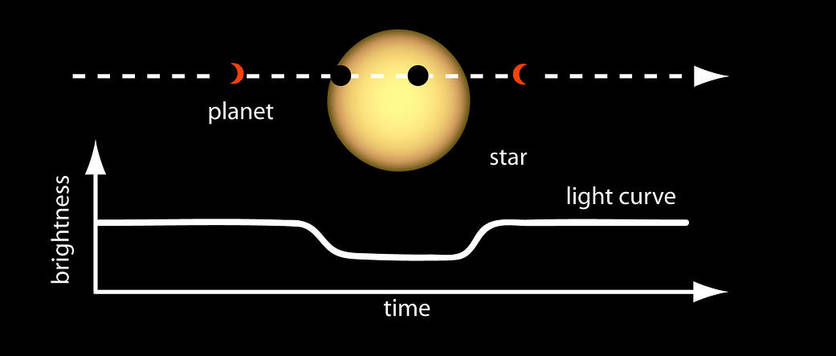Search data from NASA’s Kepler spacecraft for the dips in star light intensity caused by exoplanets – planets that orbit stars other than the Sun. As these exoplanets pass between the star and the Kepler spacecraft, the light from the star dims.
URL: www.zooniverse.org/projects/nora-dot-eisner/planet-hunters-tess
Reach: Worldwide
Nature of Science focus: Online citizen science projects can be used to develop any of the Nature of Science (NoS) substrands. Identify aspects of NoS that your students need to get better at or understand more fully and then frame your unit to be very clear about these things when you do them.
Science capability focus: Interpret representations
Science focus: Light, astronomical systems
Some suggested science concepts:
- Exoplanets are planets that orbit stars other than our Sun. They are found beyond our Solar System.
- Light travels in straight lines – shadows form when the light waves are blocked.
- When an exoplanet transits between a star and a telescope, the light that is ‘seen’ by the telescope is not as bright.
- Light intensity (brightness) can be graphed as a light curve over time.
Many concepts could be learned – focusing on a few can often be more powerful. Develop your learning outcomes and success criteria from these concepts as well as the Nature of Science strand and the science capabilities.
Four examples of learning outcomes:
Students can:
- explain the cause of shadows
- demonstrate how light and shadows relate to finding exoplanets
- explain what a light curve graph represents
- discuss some strengths and weaknesses of having citizen scientists process data.
Identifying exoplanets
Exoplanets are planets that orbit stars other than our Sun. Although extremely far away, they can be identified using a range of different methods. See the Hub article Planet hunting.
The transit method can be used to identify exoplanets that have an orbit that is lined up so that it passes between its star and Earth. When the exoplanet passes in front of a star (called an exoplanet transit), the light from the star dims slightly. This dimming is captured by telescope images.
Citizen scientists go planet hunting
In Planet Hunters, citizen scientists view light curves generated by data collected by NASA’s Kepler spacecraft. Each point on the light curve represents one measurement of a star’s brightness. The higher the dot, the brighter the star. Dips in brightness indicate that an exoplanet is transiting across the star.
Citizen scientists mark these dips, and they are followed up by the Planet Hunters science team.
Although the light curves are also being analysed by computers, citizen scientists have helped to spot exoplanets that the computers have missed – proving that human pattern recognition sometimes beats computers!
Planet Hunters is an active project operating on the Zooniverse platform. Find out which exoplanets have been discovered through the platform, read the blogs or contribute to the discussion boards.
Related content
Teacher Matt Boucher used this online citizen science project within a year 7/8 unit on light. Read the case study and accompanying unit plan with activities. Before introducing students to Planet Hunters, he used models to demonstrate how a dip occurs in the light intensity from a star when a planet passes in front of it. Students also used Agent Exoplanet, an online citizen science project to demonstrate how the light curves are constructed.
In this video ākonga who’ve participated in this project provide a brief explanation about citizen science projects, how they benefit the science community and why they like being involved.
Here are some planning tips for when you intend to use a citizen science project with your students.
In Hunting galaxies far far away – here’s how anyone can explore the universe astronomer Dr Sara Webb talks about her fascination with distant galaxies and provides information on some great online tools that can be used to look at our universe through the eyes of many different telescopes.
Useful links
Planet Hunters’ comprehensive 111-page educator guide is targeted at US grades 6–8 (uppper primary/lower secondary in New Zealand) and includes lessons plans and activities including What is Citizen Science, Our Solar System, Methods for Detecting Exoplanets, in-depth explorations about the transit method and detailed explanations to help you support students’ learning as they work with Planet Hunters.
For more about exoplanets, explore NASA’s What is an exoplanet? and Exoplanets Exploration.
This Google AI blog explains how artificial intelligence is being developed to search for exoplanets.
NASA citizen science projects are open to everyone around the world – see the range of space related projects on their website.
Acknowledgement
This outline was written as part of Victoria University of Wellington's Citizen Scientists in the Classroom project funded by the Ministry of Education's Teaching & Learning Research Initiative.

